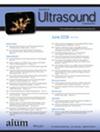Associations Between Quantitative Lung Ultrasound and Successful Extubation in Infants
Abstract
Objectives
The aim is to evaluate the value of lung ultrasound (LUS) in the weaning of neonates from ventilators.
Methods
This prospective observational study included hospitalized neonates who underwent invasive ventilation (excluding neonates ineligible for enrollment, eg, neonates with nonrespiratory conditions requiring mechanical ventilation). All the included neonates underwent LUS using a palm-sized ultrasound machine. After extubation, the neonates were divided into success and failure groups. Additionally, the neonates were divided into 2 groups according to gestational age (GA, <28 weeks and ≥28 weeks). Data on the main LUS signs and scores half an hour before and 2 hours after extubation were collected, and ultrasound scores were compared.
Results
When LUS scores before and after extubation were used to predict weaning failure, the sensitivities were 83.3 and 94.6% (95% CI, 0.823–0.986; P < .05), and the specificities were 83.3 and 97.3% (95% CI, 0.819–0.995; P < .05), respectively. After grouping, for the <28-week group, the sensitivity was 84.6% both before and after extubation, and the specificities were 77.8 and 88.9%, respectively (before extubation: 95% CI, 0.653–1.013; P < .001; after extubation: 95% CI, 0.652–1.023; P < .001). In the ≥28-week group, the sensitivity was 80.0% both before and after extubation, and the specificities were 96.9 and 98.5%, respectively (before extubation: 95% CI, 0.724–1.051; P < .001; after extubation: 95% CI, 0.777–1.051; P < .001).
Conclusions
LUS can predict weaning failure in neonates with different respiratory diseases on the basis of LUS scores, with or without differences in GA. The use of palm-sized handheld portable ultrasound machines for LUS is feasible.

 求助内容:
求助内容: 应助结果提醒方式:
应助结果提醒方式:


